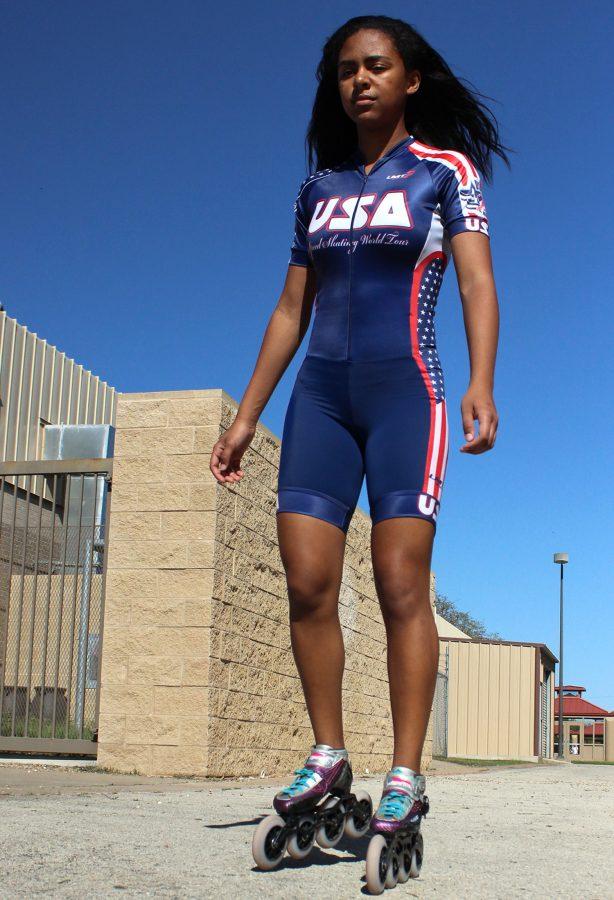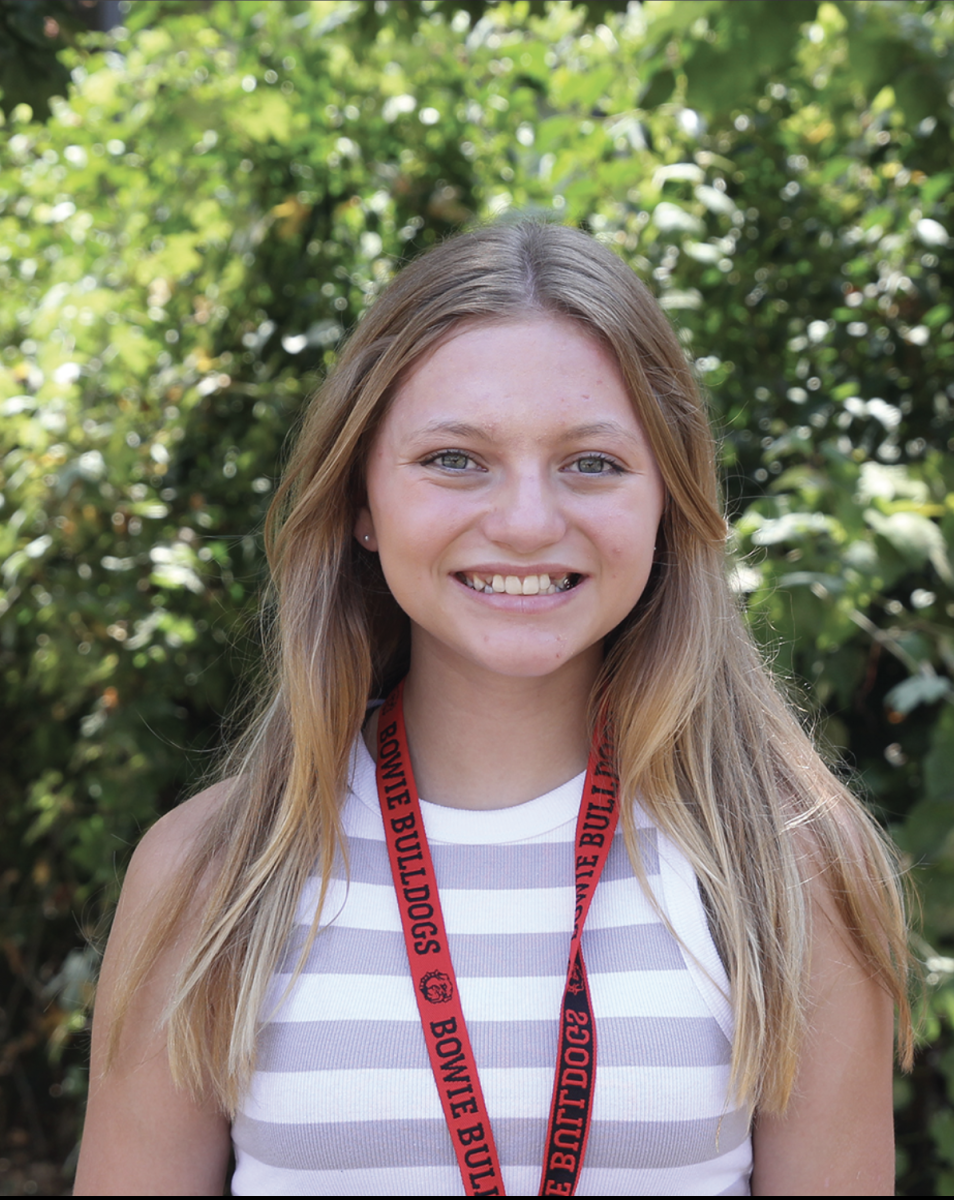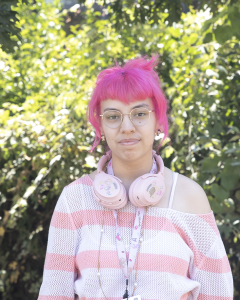Speed skating around the world
Tinsley overcomes athletic and academic obstacles
Junior Nina Tinsley puts her skates on and skates around for fun. Tinsley has been involves in speed skating since she was a little girl and plans to continue as long as possible.
May 4, 2016
Nina Tinsley is your average high school student. She goes to class, hangs out with her friends, and strives to do her best and get good grades. But there’s something original about Nina, her extracurricular activity and what she does outside of school. She is involved with an intense sport: competitive speed skating.
Speed skating originated in Northern Europe and the Netherlands as just a way of life. Originally, the natives of these snowy areas would add bones to their shoes and used them to travel on frozen rivers, canals and lakes.
During the evolution of transportation to sport, it made it’s way to the U.S. Today, athletes like Nina speed skate inside of roller rinks, but this sport is both an indoor and outdoor sport. Speed skating is an extreme physical activity and takes up a lot of time and effort so much that most people start this sport when they’re extremely young.
“I was six years old whenever I first started speed skating,” Tinsley said. “My dad forced me to start this sport but then it really grew on me and I stuck with it. It’s been an extremely important part of my life for so long, it’s hard to imagine life without it.”
Speed skating was in Tinsley’s life even before she was born. Her father Al Tinsley started the legacy and tradition of speed skating in the family himself.
“I started speed skating when I was fifteen, and I absolutely loved it,” Ninnas dad Al Tinsley said. “I speed skated throughout college and my through my late twenties, and it gave my so many amazing opportunities. A few years after my wife and I moved to Texas, I found out there a speed team nearby. So I bought some skates, and took Nina to the roller rink for the first time. She absolutely loved it, and 11 years later, she still does.”
Speed skating isn’t just a team building sport inside of the rink, but also outside in the real world as well.
“My favorite part of speed skating is that I’m able to do it with my family,” Al said. “I’m able to speed skate with Nina and my son Trey, and it has brought us so much closer as a family, we work together better and appreciate the time that we get to spend together.”
Competing is not easy and takes a lot of vigorous practice and patience. Not many people can handle the strain, Nina’s friends have noticed her intensity and hard work.
“I definitely couldn’t speed skate,” Kristen Loewe said. “I don’t have the perseverance she does and the physical portion of it is so demanding. I don’t know how she can handle everything, but somehow she does it.”
These competitions are international and all around the world. Nina is constantly on the go and travelling. Recently, Nina went to Taiwan for for the World Championships.
“It was so much fun,” Nina said. “It was really strange because everything was in a different language. It was fun because I got to see some of the most famous speed skaters and meet lots of different people. The culture was different and the time change and the food. But overall it was really fun once you got used to things.”
Going around the world is one of the huge benefits of speed skating and because of these competitions she becomes more well known and appreciated for her good work and dedication, which enables her to have the ability of going far in whatever she does.
“She can go wherever she wants to go,” Al said. “Her goal right now is to win a medal at the World Championships in China this year, and if she puts her mind to it, I know she’ll do it.”
In the future, if Tinsley wanted to pursue this sport in the Olympics she would need to change from indoor speed skating to Winter Olympics Speed Skating.
“I don’t think that I would continue into the Olympics if I needed to change what I do,” Nina said. “I know it doesn’t seem that much different, but skating in the snow or on ice is much different than in the rink. I’ve been in the rink for so long that it would be too different to change it, plus that’s not my passion.”
Missing a lot of school for competitions can be a challenge when trying to also continue getting good grades. Travelling may be exciting, but definitely makes academic life harder.
“I think that the most difficult part of Nina’s speed skating is the travelling,” Loewe said. “It’s cool that she gets to go around the country and even the world but she misses so much school. She takes pretty hard classes as well and it honestly seems like such a difficult balance.”
Though the sport is extremely exhilarating, it’s a lot of hard work and takes a lot of practice. The mental preparation is probably one of the more important factors. In order to be successful Tinsley has to focus and stay on track whether she’s practicing at home or in a competition halfway around the world.
“Being prepared mentally is the most difficult part,” Nina said. “This is because racing can really get into your head. You really have to push past your comfort zones especially in big competitions.
Not only is it hard for Nina, but her family and close friends due to absence.
“The hardest part is probably the competitions,” Al said. “The only person that is more nervous than Nina when she races is me. I still speed skate with her, but as she gets faster, it gets harder for me to keep up.”
Skating takes a lot of hard work, dedication, and time. Nina strives in all of her classes and still managed to make top 20 in the World Championships in Taiwan. Though school, skating, and just life in general can be difficult, Nina has found ways to overcome the obstacles put in her path with the help of her family and friends and the endless support she receives. Nina plans on continueing this sport as long as she possibly can.










